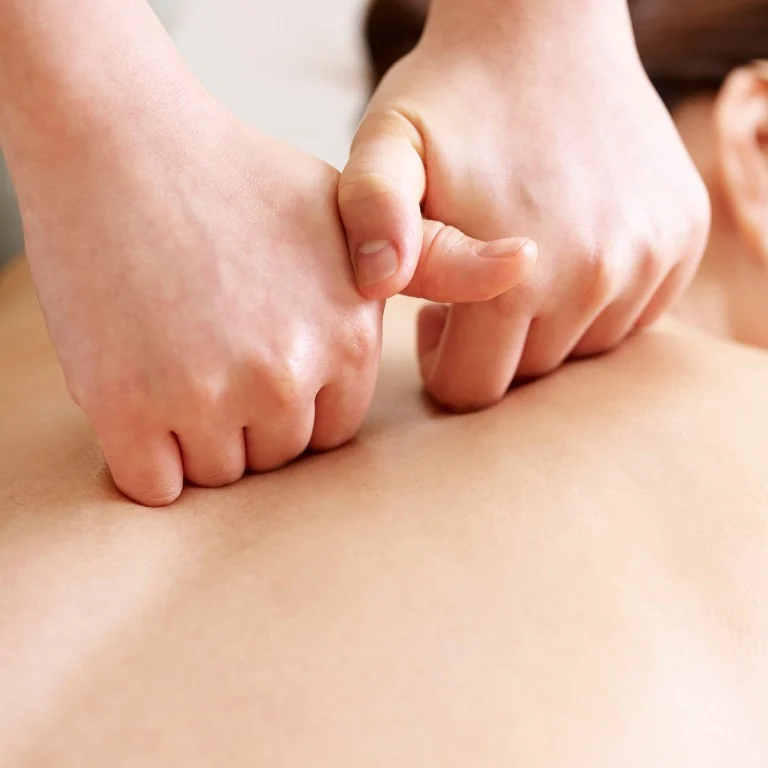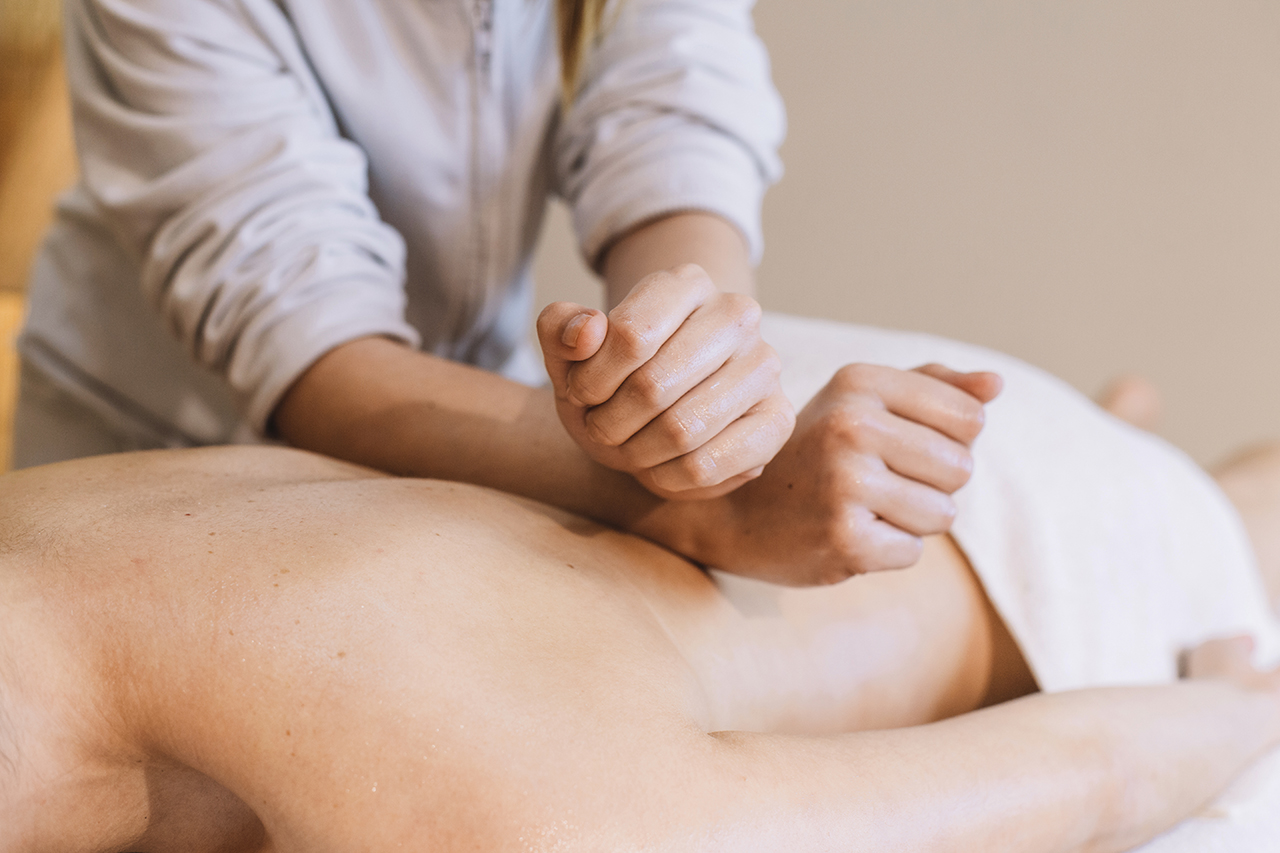What Is Tui Na Massage?
When you’re feeling stressed, tired, and overwhelmed, your body can start to feel out of balance. There’s a strong connection between mental and physical well-being and taking care of one is important for the other.
Tui na massage aims to help return that balance and restore the flow of your qi energy to help you feel better mentally and physically.
Learn about how tui na massage works, how it could benefit you, and how you can get similar relief with your own massage at home.
What Is Tui Na Massage?
Tui na is a category of therapeutic massage techniques that are meant to restore the flow of qi in your body by applying pressure in specific areas, called acupressure points. Tui na is based on the belief that there’s a strong connection between your physical health and your emotional well-being.
This form of massage therapy aims to restore that balance, removing any blockages in the flow of your qi and helping you feel more comfortable and at ease. Acupressure points are the places on the body where practitioners believe they can release those blockages of qi, and they’re also used in acupuncture.
As a form of massage therapy, tui na has a wide range of benefits, from relieving general tension to alleviating specific pains and discomfort.
History of Tui Na
Tui na is a traditional Chinese massage technique that’s been practiced for over 5,000 years. It has gradually spread in popularity around the world. The name “tui na” is a combination of the Chinese words “pinch” and “pull”—two of the therapy’s primary hand movements.
Unlike the purely relaxing massages you might dream about falling asleep to at a spa, tui na also focuses on treating types of physical discomfort. It’s a form of massage therapy that aims to restore balance and increase the flow of qi—the vital energy that, according to Traditional Chinese Medicine, flows through living beings—throughout your body.
Tui Na and Acupuncture
You’ve probably also heard about the importance of qi in acupuncture, a treatment that uses needles to manipulate a person’s qi. Tui na has similar intentions but without the needles, instead using firm massaging motions to help release energy and improve the flow of qi through your body.
Tui na manipulates acupressure points in addition to massaging soft tissue and muscles. Sometimes, tui na treatment may even include acupuncture as a part of the schedule since these treatments are so closely related.
If someone can’t get acupuncture because of their age or a medical condition, tui na may be a gentler alternative to acupuncture that they can enjoy, as it doesn’t involve puncturing the skin. In addition, a massage therapist can easily adjust the amount of force they use according to different people’s comfort levels.
Benefits of Tui Na Massage
Tui na massage is used by many practitioners to treat issues such as tension, muscle soreness, joint pain, stress, and more. These are some of the main benefits you may experience from tui na.
Relieve Tension Throughout Your Body
The various hand techniques used in tui na massage can affect your whole body, stimulating your muscles and helping you feel more relaxed overall. As the practitioner applies pressure and vibrations, the massage may help relieve some of the tension that builds up in your body, leaving you feeling relaxed and refreshed.
Focus on Specific Points of Discomfort
Tui na can treat both general discomfort and specific areas of soreness, while a more general massage, such as Swedish massage, might simply use gentle pressure to help you relax. In addition, tui na may use firmer pressure than Swedish massage to work out tension.
Tui na can be used as part of a treatment for neck, back, and shoulder soreness, joint pain, and other issues. It can involve the whole body or only specific body parts and muscles.
Promote Stress Relief
Getting tui na massage can be an enjoyable and relaxing experience, helping you stop your hectic daily routine, get away from your responsibilities for a few minutes, and quiet your mind.
During tui na massage therapy, you can relax quietly or listen to soothing music or ambient sounds. A white noise machine can help you block out distractions in the world around you and focus on yourself and your well-being. If you’re doing a massage at home, customize your experience by diffusing your favorite essential oils.
Tui Na Works With Other Treatments
Tui na fits in easily alongside other treatments, including deep tissue and sports massages, acupuncture, and other traditional and alternative medicine techniques.
If you already use a massage pad at home, tui na doesn’t have to be a replacement for it. Instead, you can alternate between different settings on the massage pad to integrate tui na into your recovery routine.
You Can Enjoy a Massage at Home
One of the best things about massage therapy is that you can generally do it at home, and tui na is no different. Once you’re familiar with the general hand movements and techniques involved and are able to identify what’s causing you discomfort, you can use a massaging cushion, handheld massager, and your own hands to get an at-home tui na experience that’s similar to a professional massage.
How to Do Tui Na Massage

The tui na technique involves a variety of hand motions and types of pressure: pulling, kneading, rubbing, vibrations, and friction, among others. During professional tui na massage, the massage therapist will apply pressure to your muscles with their hands, moving between different points on your body that it’s believed affect the flow of qi and relate to any discomfort you’re experiencing.
Tui na massage works the muscles, tendons, and other soft tissue. The massage will focus on manipulating acupressure points, but it will also cover any areas of your body that feel tense.
The intensity of tui na massage can range from a gentle, near surface-level massage to a more vigorous deep tissue massage. Tui na massage session may last up to an hour, depending on how lengthy you want the massage to be and any specific requests you may have or needs you want to be addressed.
At-Home Tui Na: Using a Massage Cushion
If you don’t want to go to a professional, can you still do tui na at home? Absolutely!
Some tui na massage therapists even show their clients how to do tui na as a self-massage so they can continue to experience benefits in between professional sessions.
If you’re doing an at-home massage, you’ll have to use a massage cushion or similar device to help you reach some of the out-of-range acupressure points. You probably can’t reach your back and shoulders with enough leverage, for example. Those are two of the main areas where a massage device will be especially helpful.
Tui na massages are often performed with the recipient lying on the floor, and you can mimic this experience with a massage cushion. Place the cushion on your bed, the couch, or the floor and lie on your back. Your body will naturally place pressure against the massage nodes, which will automatically knead, rub, and vibrate.
Choose a massage cushion with nodes that can move up and down the entire back to make sure you’re getting relief from your neck to your lower back.
On your arms, legs, front torso, and feet, you can use a handheld massager or foam roller in addition to your hands to apply tapping, rolling, and vibration massage techniques.
A heated massage cushion will provide even deeper relaxation. Applying heat to muscles helps increase the flexibility and blood flow of the tissue, according to the Clinical Journal of Sport Medicine. Heat therapy can also help ease soreness and release tension in your body.
Whether you’re doing tui na at a professional clinic or at home, you can often stay fully clothed for this type of massage. Just wear comfortable, loose-fitting clothes that won’t inhibit the therapist from reaching the areas you’d like them to focus on.
Rebalancing with Tui Na Massage
When life feels out of balance, stress feels overwhelming, or you simply need a break from the day-to-day, you can try to restore the flow of your qi with tui na massage. Whether you schedule a professional appointment or use a self-massager at home, let the firm pressure of the massage help relax your muscles and your mind.
When you feel refreshed, you’ll have a better outlook and feel more prepared to tackle whatever may be causing you stress and worry. Explore more about how massage therapy at a clinic or using a massage cushion can help relieve soreness and unlock other wellness benefits.
Medical Disclaimer: This content is provided for informational purposes only and not intended to be a substitute for professional medical advice, diagnosis or treatment.
Sources
- Tui na | University of Minnesota
- Benefits of Tui Na Massage – Pacific College
- Top 5 Benefits of Tuina (Tui Na) Massage
- The Efficacy of Sustained Heat Treatment on DOMS – Clinical Journal of Sport Medicine
- Effectiveness of Chinese massage therapy (Tui Na) for chronic low back pain: study protocol for a randomized controlled trial

